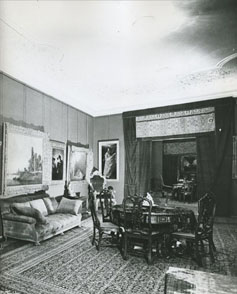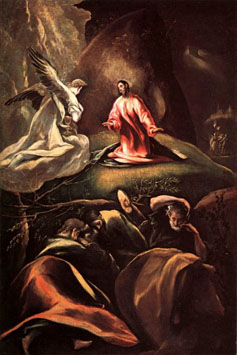For Any Inquries
Please contact:
Alycia Regan Benenati
Kasowitz Benson Torres LLP
1633 Broadway
New York, New York 10019
Tel. (212) 506-1975
Fax. (212) 500-3475
ABenenati@kasowitz.com
About the Artworks
More than 40 works of art from the Herzog Collection are currently in the possession of three museums in Budapest, all agencies of the Republic of Hungary, including the Museum of Fine Arts, the Hungarian National Gallery, and the Museum of Applied Arts as well as the Budapest Technological University, also an agency of Hungary. Click here for a list of all the artwork claimed in the lawsuit. Three of the most significant paintings held hostage by the Hungarian government are introduced below. These and other highlighted works can be viewed in the Photo Gallery.
El Greco’s The Agony in the Garden is considered to be one of the artist’s most visionary paintings, showing Jesus praying in the Garden of Gethsemane, on the Mount of Olives outside Jerusalem’s walls. El Greco communicates Christ’s spiritual struggle as he contemplates his imminent crucifixion while his followers sleep in the foreground. Through expressive distortion of facial features, attentuated pose, rich color and a wild sky, the artist creates a disturbing and otherworldly image. Born Domenikos Theotokopoulos on the island of Crete, El Greco (“the Greek”) trained in Venice and Rome before settling in Toledo, Spain, where he painted this picture between 1605 and 1610. El Greco’s emotionally charged religious images in an original and unique style confirm his status as one of the most visionary artists of any era.
Francisco de Zurbarán’s portrait of Saint Andrew was painted in Seville, at the zenith of the artist’s career. Zurbarán depicts Andrew the Galilean fisherman, Peter’s brother and the first apostle called by Jesus. The monumental figure standing before an overcast sky leans on a roughly carved cross that prefigures his martyrdom. The strong and simple composition with its stark contrast of light and dark convey the spiritual power of Andrew’s faith.
The Annunciation to Joachim by Lucas Cranach the Elder was painted in 1518 and is considered a major work of the artist. It shows the rare subject of the shepherd Joachim in a landscape when the archangel Gabriel brings him news that his wife Anna will conceive a child (Mary) who will be the Mother of Jesus. Cranach creates a composition that masterfully depicts the dramatic moment of this annunciation. With Albrecht Dürer, Lucas Cranach the Elder was the most important German renaissance artist and a major visual interpreter of Martin Luther’s theology.
 This image of Baron Herzog's study is celebrated by art historians for containing an astonishing assemblage of El Greco paintings (the former Herzog Collection included six El Greco works). Among those pictured are four El Greco paintings included in this lawsuit: "The Holy Family with Saint Anne" (Far Left); "Saint Andrew" (Second from Left); "The Agony in the Garden" (Third from Left); "The Espolio" (Fourth from Left).
This image of Baron Herzog's study is celebrated by art historians for containing an astonishing assemblage of El Greco paintings (the former Herzog Collection included six El Greco works). Among those pictured are four El Greco paintings included in this lawsuit: "The Holy Family with Saint Anne" (Far Left); "Saint Andrew" (Second from Left); "The Agony in the Garden" (Third from Left); "The Espolio" (Fourth from Left).
 This image shows Francisco de Zurbaran’s painting of St. Andrew hanging in the Herzog family home.
This image shows Francisco de Zurbaran’s painting of St. Andrew hanging in the Herzog family home.
 The Agony in the Garden, El Greco (Domenikos Theotokopoulos). This painting is one of El Greco’s most renowned.
The Agony in the Garden, El Greco (Domenikos Theotokopoulos). This painting is one of El Greco’s most renowned. 